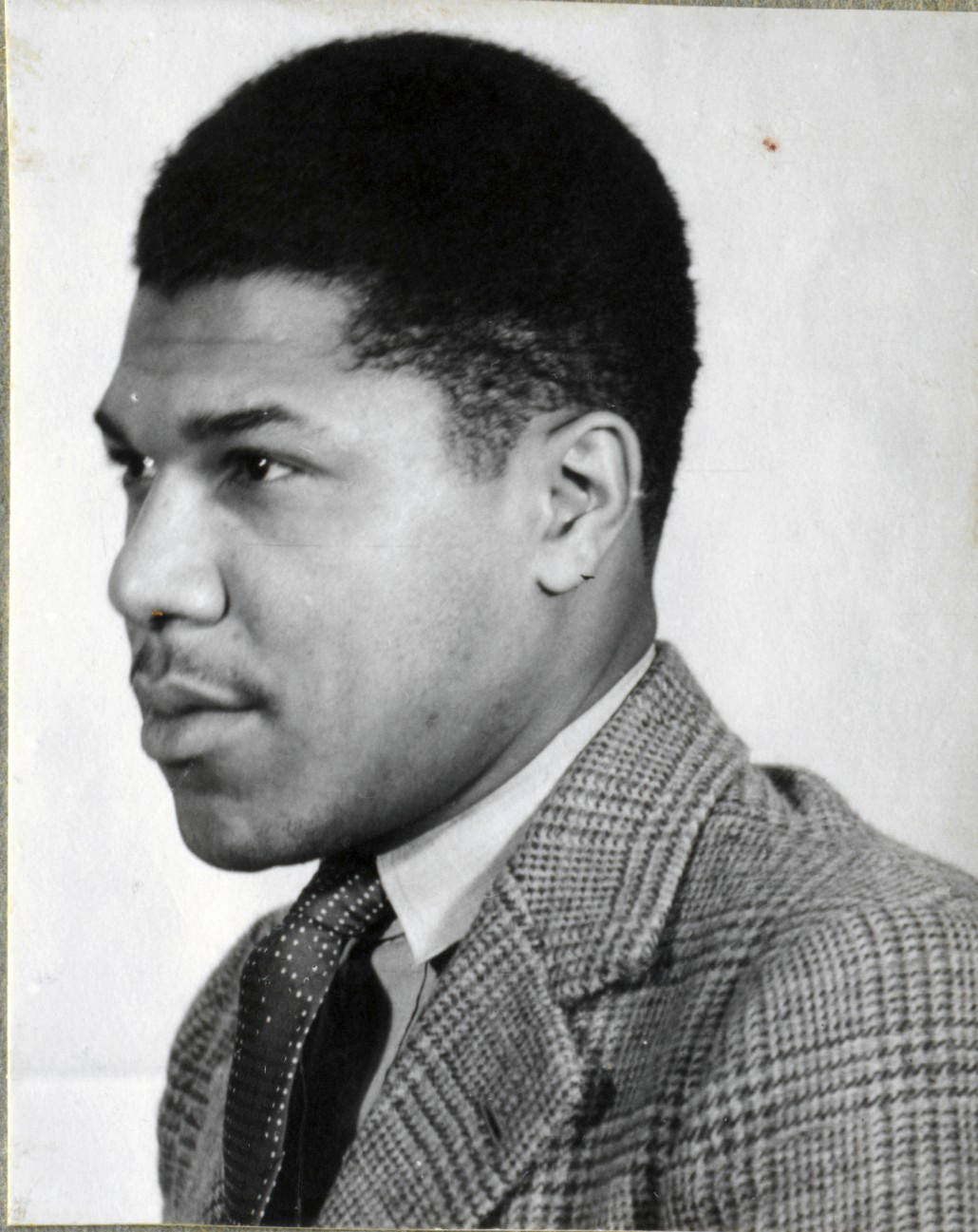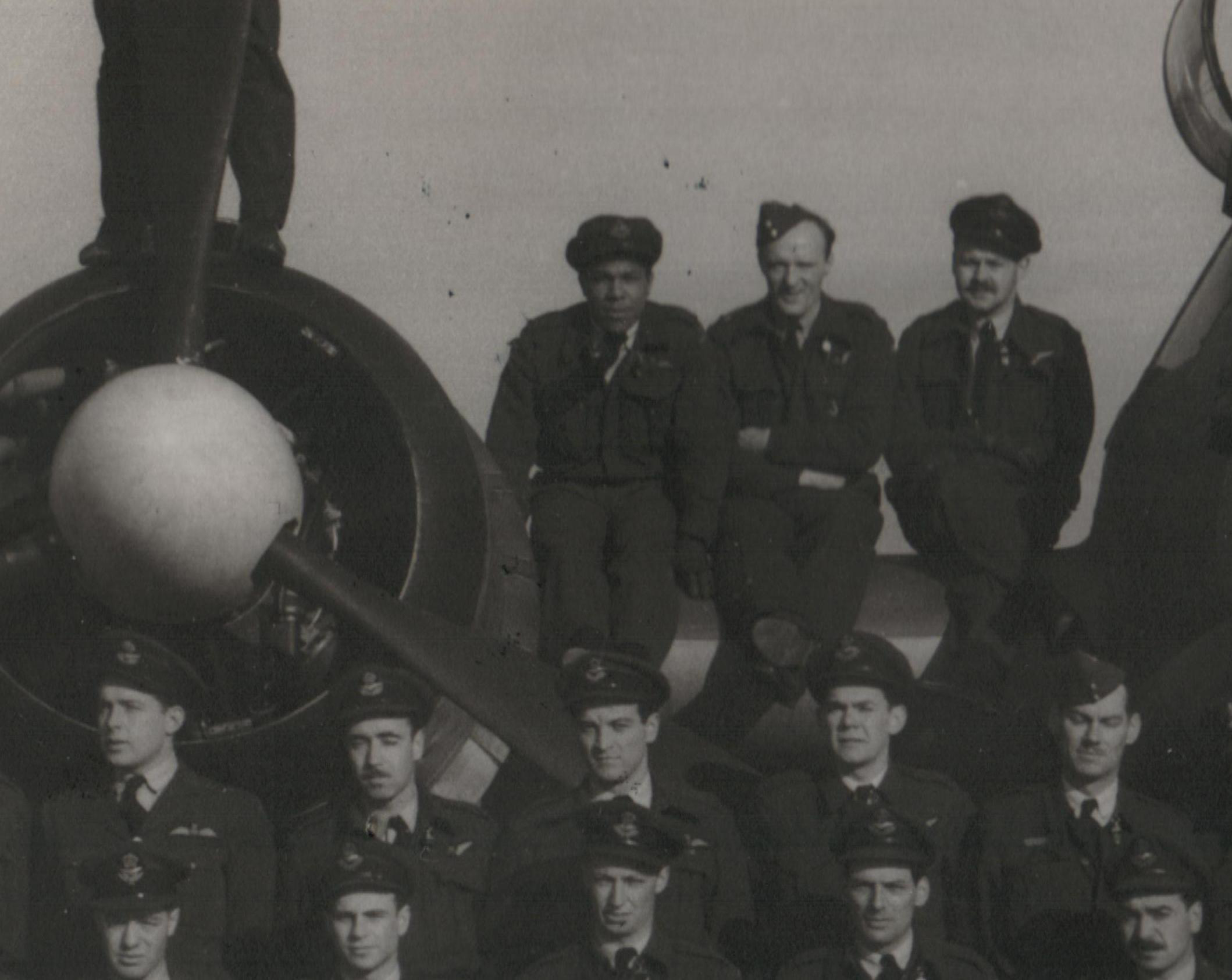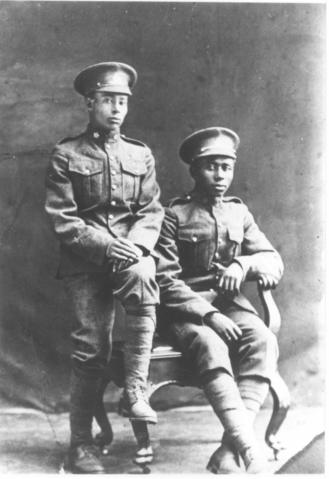Allan Selwyn Bundy, pilot (born 1920 in Dartmouth, NS; died 9 December 2001 in Toronto, ON). He was one of two known Black Canadian combat pilots during the Second World War. Bundy served in the Royal Canadian Air Force (RCAF) and, according to the operations record book of 404 Squadron, flew 28 combat missions.

Early Life and Education
Allan Bundy was the eldest of three boys and one girl born to William Henry and Ruth Bundy. William served in No. 2 Construction Battalion in the First World War. ( See also Black Volunteers in the Canadian Expeditionary Force.) Allan’s brother Carl also served in the RCAF during the Second World War.
Bundy attended Dartmouth High School where he excelled in sports. He was a pole vaulter and a junior half mile and one mile champion. (See also Track and Field.) His athletic abilities and academic prowess led to a scholarship from the Imperial Order Daughters of the Empire. Bundy studied at Dalhousie University for two years, specializing in chemistry. He intended to become a doctor.
In 1942, Bundy left Dalhousie and began working as a porter on the Canadian National Railway. On 13 January 1942 he married Marie Della Kane. Later that year, Bundy enlisted in the RCAF.
Joining the RCAF
Shortly after the war began, Allan Bundy and a friend tried to enlist in the RCAF. At the time, the RCAF’s policies prevented the enlistment of Asian and Black Canadians. ( See also Anti-Asian Racism in Canada and Anti-Black Racism in Canada.) While his white friend was accepted, Bundy was rejected because he was Black. When he later received a conscription notice, Bundy ignored it. An RCMP officer later came to his house to enforce the notice. Bundy asked why he should join the Army if he was not good enough for the RCAF. The officer relented, while Bundy returned to the RCAF recruiting centre; by that point, the RCAF had removed racial barriers to enlistment.
RCAF Training
Allan Bundy enlisted in the RCAF on 17 June 1942, hoping to be either a pilot or a navigator. He completed his basic training at No. 5 Manning Depot in Lachine, Quebec on 19 August. He then went to No. 9 Service Flying Training School at Centralia, Ontario. Like most candidates awaiting training, he performed menial tasks until a vacancy on a pilot training course became available at an initial training school. He began his pilot training at No. 1 Initial Training School in Toronto where he learned the basics of aviation and was tested for further training as a pilot. He graduated on 30 December 1942, becoming Leading Aircraftman Bundy.
Bundy was posted to No. 7 Elementary Flying Training School at Windsor, Ontario to start his flying training. During his solo flight, his aircraft stalled and crashed from 250 feet. Bundy was seriously injured and spent a month in hospital but graduated to the next phase.
On 15 May 1943, Bundy started training at No. 14 Service Flying Training School at Aylmer, Ontario. This was a twin engine aircraft school where he learned the intricacies of military flying. Bundy graduated on 3 September and was awarded the coveted RCAF pilot’s wings. Due to his high standing in the class, he was commissioned as a pilot officer (equivalent to today’s 2nd Lieutenant).
On 19 September 1943, Pilot Officer Bundy was posted to No. 1 General Reconnaissance School (GRS) at Summerside, Prince Edward Island for training in maritime patrol operations. In November, he visited Dartmouth, where he was given a warm welcome by the Black community. Reverend W.P. Oliver paid tribute to him while the Black community of Halifax-Dartmouth gave him a watch. Attending the event was another Black serviceman, Petty Officer Piercy Haynes of Winnipeg, who was serving in the Royal Canadian Navy at Halifax. Bundy graduated from 1 GRS and was sent overseas, arriving in England on 14 February after a period of leave.

Overseas
Once in England, Pilot Officer Allan Bundy had to take pilot refresher training to bring him up to speed on the latest operational procedures. From there he was sent to an operational training unit where he had to find and team up with a navigator. They would then train together to become an effective crew. After some delay Bundy found Flight Sergeant Elwood Cecil Wright from Ontario. The two of them then learned the latest operational techniques employed in anti-shipping strike missions.
On 27 September Flying Officer Bundy and Flight Sergeant Wright arrived at 404 (Buffalo) Squadron, operating from RAF Dallachy in Scotland. The squadron’s role was to conduct anti-shipping attacks off the Norwegian coast, but also to carry out anti-submarine patrols and armed reconnaissance flights. The squadron flew Bristol Beaufighter TF.X aircraft armed with cannons and rocket projectiles.
Bundy and Wright had first to learn 404 Squadron procedures and the flying situation in the area. They became operationally ready on 8 October. Their first operational mission was on 15 October when the squadron sent 12 aircraft as part of a larger formation to attack a tanker and a German warship. Both were sunk, with Bundy firing his rockets at the tanker.
This type of large operation was normal for the anti-shipping squadrons. Besides 404 Squadron with its rockets and cannons, the formations included fighter protection to defend against German air attacks, anti-flak aircraft to help suppress the heavy defensive fire, torpedo or other rocket-carrying aircraft, and often a search and rescue aircraft to drop a lifeboat to any crew that was shot down. These were all required as these were dangerous missions. On 9 February 1945, for example, six of 404 Squadron’s Beaufighters were shot down.
Flying Officer Bundy participated in 28 combat missions before the end of the war. On only one occasion did he have to return early. Besides the mission of 15 October, Bundy and Pilot Officer Wright (commissioned on 14 October 1944) flew on five other missions where enemy shipping was attacked.
On 1 April 1945, 404 Squadron converted to the De Havilland Mosquito. Bundy and Wright spent the next three weeks learning to operate the new aircraft. When the squadron became operational again on 22 April, Bundy and Wright were only able to fly two more mission, both of them after the war had ended. On 12 May they were part of the air escort for a naval force that was carrying very important persons to Norway. On 22 May they flew a mission to the Norwegian coast to report on the weather. This allowed two squadrons of Royal Norwegian Air Force Supermarine Spitfires to fly to Norway.
At the end of May 404 Squadron began preparations for its personnel to return to Canada, the squadron being disbanded on 25 May. On 9 July 1945 Flying Officer Bundy was repatriated to Canada and was discharged on 17 August in Toronto.
Bundy continued to live and work in Toronto. He was a member of the Baron Byng Branch, Royal Canadian Legion and the Whitevale Golf Club in Pickering. He died on 9 December 2001 after a long illness.
Significance
Allan Bundy and his family demonstrated the desire of Black Canadians to serve their country in time of war. Bundy was one of the first Black Canadians to receive a commission in the RCAF. To those with whom he flew, he demonstrated that Black Canadians could be every bit as reliable in the air as any other individual. Allan Bundy was also a rarity at the time – one of only two known Black Canadian pilots who flew in combat. The other, Junius Lyman Edward Hokan, was killed in September 1942.

 Share on Facebook
Share on Facebook Share on X
Share on X Share by Email
Share by Email Share on Google Classroom
Share on Google Classroom








